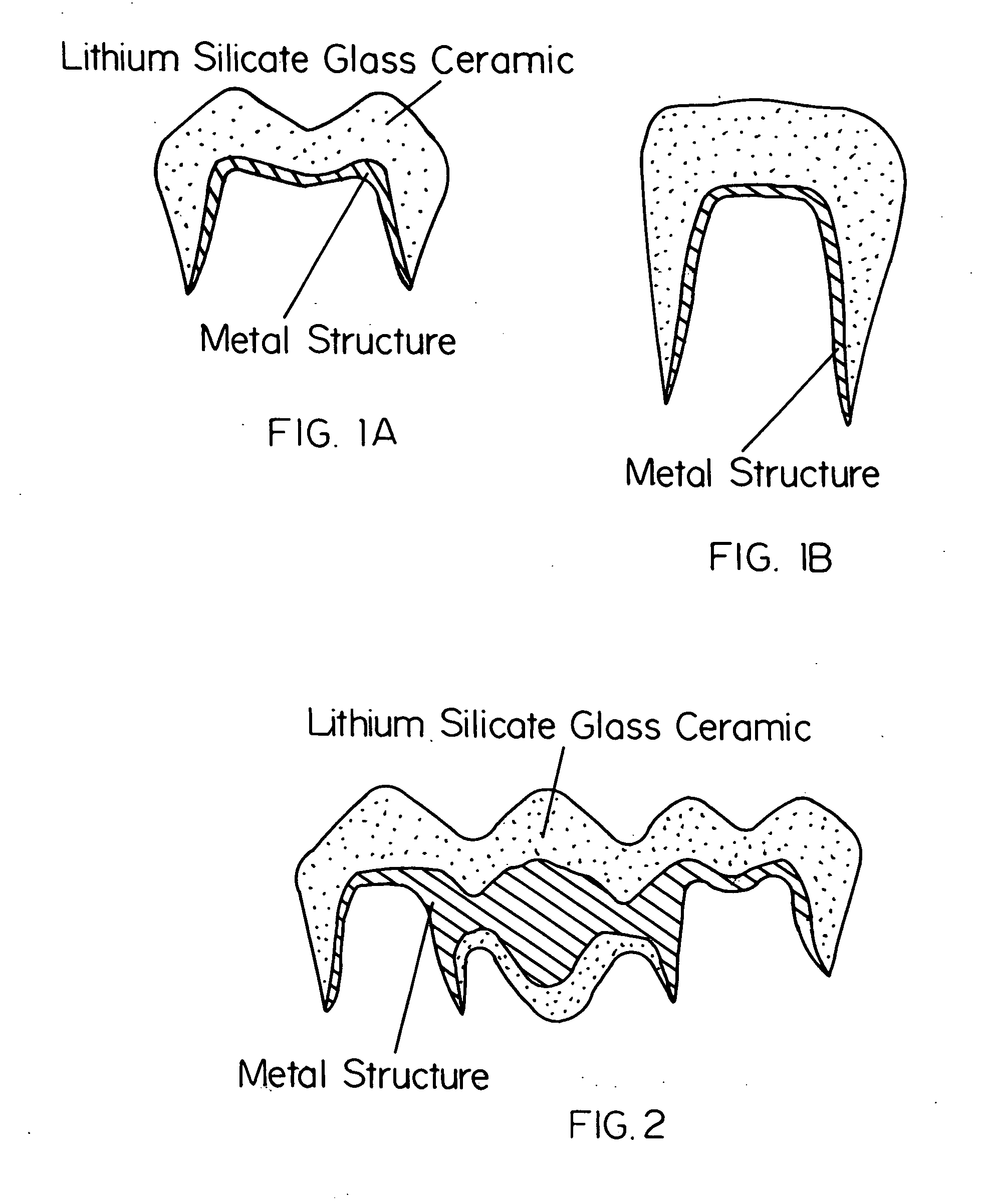Indirect restoration technology
a technology of indirect restoration and dental implants, applied in tooth capping, dental surgery, manufacturing tools, etc., can solve the problems of high separation probability, and achieve the effect of reducing the separation probability and high separation probability
- Summary
- Abstract
- Description
- Claims
- Application Information
AI Technical Summary
Benefits of technology
Problems solved by technology
Method used
Image
Examples
Embodiment Construction
[0029]The present invention may be best understood by referring to the accompanying drawings which show a preferred embodiment of the restorations made with lithium silicate on a metal alloy substrate. The lithium silicate, when pressed onto a metal alloy substrate, may be deemed to be a substitute material for porcelain fused to metal. One significant advantage derived from the use of lithium silicate instead of porcelain is the strength of the material. Lithium silicate has a strength in MPa which is approximately three times that of dental porcelain. The flexural strength of porcelain is in the range of 70 to 125 MPa. The flexural strength of lithium silicate glass ceramic is in the range of 300 to 380 MPa.
[0030]In one preferred embodiment, the lithium silicate is heated and pressed onto a metal alloy substrate made primarily of palladium and tin. This alloy has a coefficient of thermal expansion in the desired range of 12 to 13.5. This CTE is slightly higher than the CTE of the ...
PUM
| Property | Measurement | Unit |
|---|---|---|
| Coefficient of linear thermal expansion | aaaaa | aaaaa |
Abstract
Description
Claims
Application Information
 Login to View More
Login to View More - R&D
- Intellectual Property
- Life Sciences
- Materials
- Tech Scout
- Unparalleled Data Quality
- Higher Quality Content
- 60% Fewer Hallucinations
Browse by: Latest US Patents, China's latest patents, Technical Efficacy Thesaurus, Application Domain, Technology Topic, Popular Technical Reports.
© 2025 PatSnap. All rights reserved.Legal|Privacy policy|Modern Slavery Act Transparency Statement|Sitemap|About US| Contact US: help@patsnap.com



